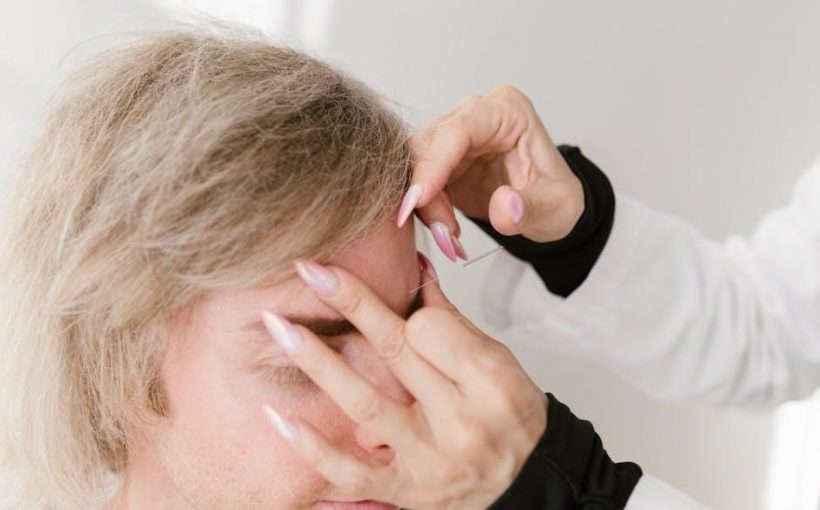Overview of Acupressure
Acupressure is an ancient healing technique rooted in Traditional Chinese Medicine (TCM). It involves applying pressure to specific body points to restore balance and promote well-being.
By targeting key meridians and gateways, acupressure aims to relieve pain, reduce stress, and enhance overall health. A full body acupressure chart provides a visual guide for self-treatment.
Regular practice can improve circulation, relax muscles, and boost energy. It’s a natural, non-invasive approach to managing various health conditions and maintaining holistic wellness.
Acupressure is a traditional healing practice that involves applying physical pressure to specific points on the body to promote health and well-being. It is based on the principles of Traditional Chinese Medicine (TCM), which emphasizes the flow of energy, or “qi,” through the body. By targeting key acupressure points along the body’s meridians, individuals can restore balance, relieve pain, and enhance overall vitality.
A full body acupressure points chart provides a detailed map of these pressure points, making it easier for individuals to locate and apply pressure effectively. This practice is non-invasive and can be used to address a variety of health concerns, including pain, stress, and digestive issues. Regular use of acupressure can also improve circulation, reduce tension, and support long-term wellness.
With its roots in ancient Chinese medicine, acupressure has evolved into a popular self-treatment method. It is often combined with massage techniques, reflexology, and other holistic practices to maximize its benefits. Whether used for specific ailments or general well-being, acupressure offers a simple yet powerful way to take control of your health.
Benefits of Acupressure
Acupressure offers numerous health benefits, including pain relief, stress reduction, and improved sleep quality. By targeting specific pressure points, it helps alleviate chronic pain, migraines, and muscle tension. This practice also promotes relaxation, reducing anxiety and emotional stress by releasing endorphins, the body’s natural painkillers.
Regular acupressure can enhance circulation, boost the immune system, and improve overall well-being. It is particularly effective for digestive issues, menstrual cramps, and fatigue. Many users find it helpful for managing stress-related conditions and maintaining emotional balance.
A full body acupressure points chart simplifies self-treatment, allowing individuals to address specific health concerns at home. Its non-invasive nature makes it a safe and accessible option for people of all ages, offering long-term benefits with consistent practice.
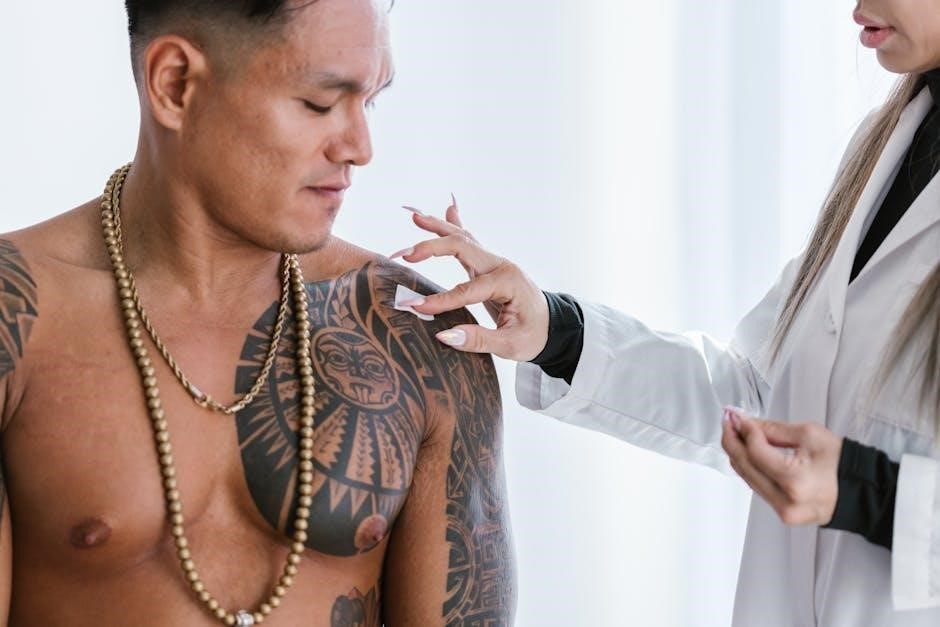
Understanding Acupressure Points
Acupressure points are specific gateways along meridians where energy flows. Applying pressure balances qi, relieving pain, stress, and promoting well-being. A full body chart maps these points for self-treatment.
Definition of Acupressure Points
Acupressure points are specific locations on the body where pressure is applied to stimulate the body’s natural healing processes. These points, also known as acupoints, are situated along meridians, or energy pathways, through which qi (life energy) flows. According to Traditional Chinese Medicine (TCM), there are over 350 acupressure points, each corresponding to specific organs, systems, or functions. When pressure is applied to these points, it helps restore balance to the flow of qi, relieving pain, stress, and various health conditions. A full body acupressure chart provides a detailed map of these points, allowing individuals to locate and apply pressure effectively for self-treatment and wellness. Understanding these points is essential for harnessing the therapeutic benefits of acupressure.
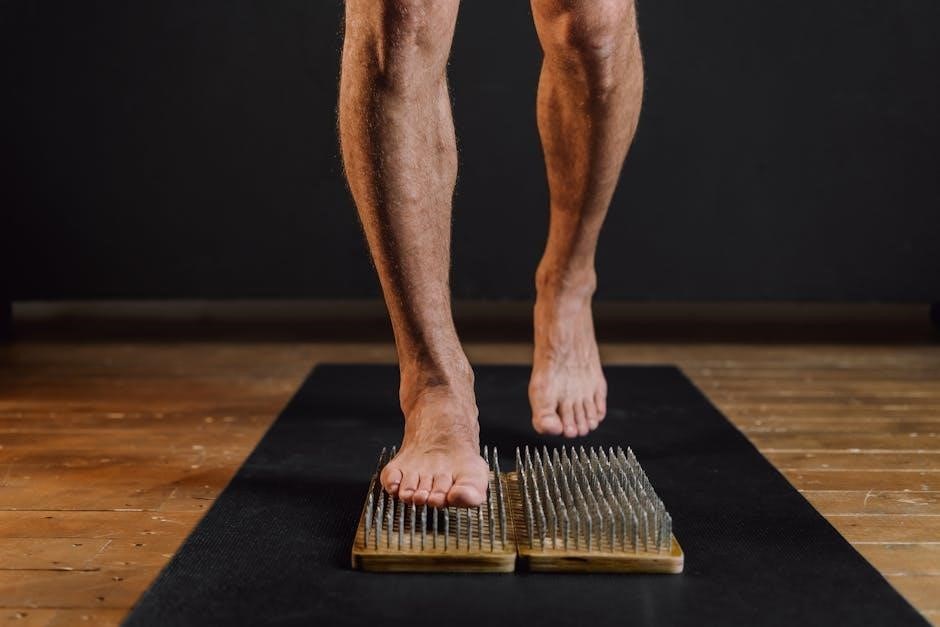
Key Meridians and Their Significance
Key meridians are energy pathways in the body through which qi flows, connecting internal organs and external structures. There are 12 main meridians, each corresponding to a specific organ or system, such as the Lung (LU), Large Intestine (LI), Stomach (ST), and Heart (HT) meridians. Additional meridians, like the Governing Vessel (GV) and Conception Vessel (CV), play roles in overall energy balance. These pathways are crucial for maintaining health, as blockages can lead to illness. A full body acupressure chart highlights these meridians, offering a visual guide to locating key points. By understanding their significance, individuals can target specific areas to address health concerns, making meridians central to the practice and effectiveness of acupressure therapy.
Gateways and Pressure Points
Gateways are specific acupressure points where energy flows converge, serving as access points to regulate the body’s energy. These points are strategically located along meridians and are essential for restoring balance. A full body acupressure chart maps these gateways, guiding users to pinpoint locations for applying pressure. Common gateways include CV 17 (Chest Center) for respiratory issues and LI 4 (Hegu) for pain relief. Pressure points, when stimulated, can alleviate symptoms like nausea, stress, and muscle tension. Proper technique involves applying firm, steady pressure, often in a circular motion, to activate the point. Understanding gateways and their functions allows individuals to effectively use acupressure for self-care and therapeutic benefits, enhancing overall well-being through targeted pressure application.

History and Origins
Acupressure traces its roots to ancient China, evolving from Traditional Chinese Medicine (TCM). It developed over centuries, refining techniques to balance energy flow through meridians. Early practices emphasized manual pressure to heal, with detailed charts mapping key points. Modern acupressure integrates these traditions, offering accessible tools like the full body acupressure points chart PDF for widespread use.
Traditional Chinese Medicine (TCM) and Acupressure
Acupressure is deeply rooted in Traditional Chinese Medicine (TCM), which emphasizes the flow of life energy, or “qi,” through the body. TCM practitioners believe that qi travels along specific pathways, or meridians, and that blockages in these pathways can lead to illness and discomfort. Acupressure works by applying manual pressure to key points along these meridians to restore balance and harmony to the body. This ancient practice is often used to relieve pain, reduce stress, and improve overall health. The full body acupressure points chart PDF provides a detailed map of these points, making it easier for individuals to locate and apply pressure to specific areas. By following TCM principles, acupressure offers a natural and non-invasive approach to wellness, aligning with the holistic philosophy of traditional Chinese healing practices.
Evolution of Acupressure Techniques
Acupressure techniques have evolved significantly over centuries, originating from ancient Chinese practices. Early methods focused on manual pressure applied to specific points to balance the body’s energy, or “qi.” Over time, detailed charts and maps were developed to identify key meridians and pressure points. The integration of acupressure with other therapies, such as reflexology and trigger point therapy, has expanded its applications. Modern advancements include the creation of full body acupressure points charts in PDF formats, making it accessible for self-treatment. These resources provide visual guidance, enabling individuals to locate and apply pressure effectively. The evolution of acupressure techniques reflects a blend of traditional wisdom and contemporary innovations, ensuring its relevance in holistic health practices.
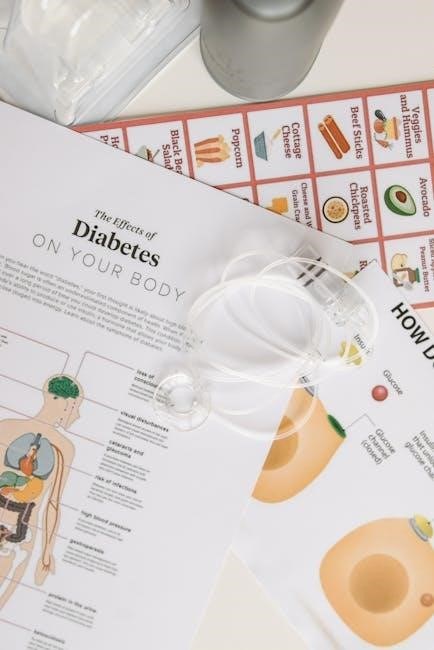
Practical Application
A full body acupressure points chart PDF provides a detailed guide for identifying and applying pressure to specific points. It enables effective self-treatment, enhancing well-being through pain relief and improved circulation.
How to Use a Full Body Acupressure Chart
A full body acupressure chart serves as a comprehensive guide to locating and applying pressure to key points across the body. It visually maps out meridians, gateways, and specific pressure points linked to various health conditions. To use the chart effectively, start by identifying the points relevant to your needs, such as pain relief or stress reduction. Apply firm, steady pressure using fingers or tools like rollers or massagers. Massage each point in a circular motion for 30 seconds to stimulate energy flow. Refer to the chart’s instructions for proper techniques and pressure intensity. Regular practice can enhance well-being, improve circulation, and alleviate discomfort. The chart is often available as a downloadable PDF, making it easy to access and use for self-treatment at home.
Techniques for Applying Pressure
Mastering the techniques for applying pressure is essential for effective acupressure. Start by locating the specific points using a full body acupressure chart. Use your fingers, thumbs, or tools like rollers or massagers to apply firm, steady pressure. Circular motions or gentle kneading can enhance stimulation. For deeper relief, hold pressure for 5-10 seconds before releasing slowly. Techniques vary depending on the point—some require soft tapping, while others benefit from sustained pressure. Breathing deeply during sessions can improve relaxation and energy flow. Avoid using excessive force to prevent discomfort. Regular practice with proper technique ensures safety and maximizes benefits, making it a valuable self-care practice for overall well-being.
Safety Guidelines and Precautions
When using a full body acupressure points chart, it’s crucial to follow safety guidelines to avoid discomfort or injury. Begin with gentle pressure and gradually increase as needed. Avoid applying pressure to sensitive or injured areas, as well as areas with open wounds or scars. Pregnant individuals, people with chronic health conditions, or those with implanted medical devices should consult a healthcare provider before practicing acupressure. Techniques should be performed in a comfortable position to prevent strain. Use clean tools or hands to minimize the risk of infection. If pain or numbness occurs, stop immediately and seek professional advice. Proper technique is essential to ensure safety and effectiveness, making acupressure a beneficial and risk-free practice when done correctly.

Specific Acupressure Points
Key acupressure points like LI4, LV3, and GB21 target specific areas for pain relief and wellness. These points are mapped on a full body chart for easy reference.
Head and Neck Points
The head and neck area contains numerous acupressure points that target common issues like headaches, sinus pressure, and stress. Points such as GV21 (located at the top of the head) and GV24.5 (between the eyebrows) are known for their calming effects. GB21, found at the base of the skull, is often used to relieve tension and neck pain. These points are easily accessible and can be massaged gently in circular motions for 30 seconds. Regular application can improve circulation and reduce migraines. A full body acupressure chart highlights these points, making it easier to identify and apply pressure correctly for effective relief. This natural approach promotes relaxation and overall well-being without invasive methods.
Upper Body Points
Upper body acupressure points are strategically located to address various health concerns, including respiratory issues, shoulder tension, and emotional stress. Points like LU1 (Central Treasury) and LI4 (Hegu) are key areas that, when pressured, can improve breathing and reduce pain. Located on the chest and arms, these points are easily accessible for self-treatment. Applying gentle, sustained pressure to LI4, found on the web between the thumb and index finger, can relieve facial pain and promote relaxation. Similarly, LU1, situated near the collarbone, aids in easing respiratory discomfort. A full body acupressure chart provides detailed locations and techniques for these points, enabling users to effectively target upper body discomfort and enhance overall well-being through consistent practice. Regular use of these points can lead to noticeable improvements in both physical and mental health.
Lower Body Points
Lower body acupressure points focus on addressing digestive health, lower back pain, and immune system support. Key points like SP6 (Sanyinjiao) and ST36 (Zusanli) are essential for enhancing digestion and boosting energy. SP6, located just above the ankle, is known to improve blood flow and relieve menstrual discomfort. ST36, found on the shin, strengthens immunity and aids in digestion. Other points, such as GB34 (Yanglingquan), target lower back pain and joint stiffness. Applying pressure to these areas can provide significant relief from common ailments. A full body acupressure chart highlights these points, offering a clear guide for self-treatment. Regular practice can lead to improved digestive function, reduced pain, and overall lower body well-being. These points are accessible and effective for maintaining holistic health.
Full Body Pressure Points Chart
A full body pressure points chart is a comprehensive visual guide that maps out the key acupressure points across the entire body. These charts are designed to help individuals locate and understand the specific pressure points associated with various health conditions. They often include detailed illustrations of meridians, gateways, and the exact locations of points like LI4, LV3, and GB34. By referencing a full body chart, users can identify points for pain relief, stress reduction, and improving sleep quality. The charts are typically color-coded and labeled for clarity, making it easier to apply acupressure techniques effectively. Downloading a PDF version of the chart allows for easy access and self-treatment at home. These resources are invaluable for anyone looking to harness the benefits of acupressure for overall well-being.

Therapeutic Benefits
Acupressure offers numerous therapeutic benefits, including pain relief, stress reduction, and improved sleep quality. It enhances overall well-being by stimulating key pressure points. Regular practice promotes holistic health.
Pain Relief Through Acupressure
Acupressure is a natural and effective method for pain relief, targeting specific points to stimulate the body’s healing processes. By applying pressure to key points like LI4 and LV3, it helps alleviate various types of pain, from chronic conditions to muscle tension. This technique enhances blood flow and releases endorphins, the body’s natural painkillers, promoting relaxation and reducing discomfort. The full body acupressure chart guides users to locate these points, enabling self-treatment and empowering individuals to manage pain holistically. Regular practice can lead to sustained relief and improved quality of life. Acupressure is particularly beneficial for those seeking a non-invasive alternative to medication. Its simplicity and effectiveness make it a popular choice for addressing pain-related issues. With consistent use, acupressure can significantly reduce pain and restore bodily balance.
Stress and Anxiety Relief
Acupressure offers a powerful solution for managing stress and anxiety by targeting specific points that promote relaxation and emotional balance. Key points like LI4 (Hegu) and Yintang (Third Eye Point) are known to calm the mind and reduce tension. Applying gentle pressure to these areas stimulates the parasympathetic nervous system, which helps the body relax and counteract stress. The full body acupressure chart highlights these points, making it easier to locate and apply pressure effectively. Regular practice can lower cortisol levels, improve mood, and enhance overall mental well-being. Acupressure is a natural, non-invasive way to alleviate stress and anxiety, providing immediate relief and long-term benefits when practiced consistently. This holistic approach empowers individuals to take control of their emotional health and find peace in a busy world.
Improving Sleep Quality
Acupressure is a natural and effective way to enhance sleep quality by targeting specific points that promote relaxation and reduce stress. The SP6 (Sanyinjiao) point, located on the inner lower leg, is particularly beneficial for improving sleep. Applying gentle pressure to this point helps regulate the body’s energy flow and alleviates insomnia. Additionally, the CV17 (Shanzhong) point, situated midway between the nipples, is known to calm the mind and promote deep relaxation, making it easier to fall asleep and stay asleep. Using a full body acupressure chart can guide you to these and other sleep-enhancing points. Regular practice can improve sleep duration, reduce restlessness, and leave you feeling refreshed and rejuvenated. Incorporating acupressure into your bedtime routine offers a holistic approach to achieving better sleep without medication.
Enhancing Overall Well-being
Acupressure is a powerful tool for enhancing overall well-being by balancing the body’s energy and promoting holistic health. By stimulating key points, it improves circulation, boosts the immune system, and enhances vitality. The CV6 (Qihai) point, located below the navel, strengthens the body’s energy center, while the LV3 (Taichong) point, found on the foot, harmonizes liver energy for emotional well-being. Regular acupressure practice can improve digestion, reduce fatigue, and uplift mood. Using a full body acupressure chart helps identify these points for self-care. This natural therapy supports long-term health and resilience, allowing individuals to maintain a balanced and vibrant lifestyle without relying on medications. Incorporating acupressure into daily routines fosters a deeper connection to body and mind, promoting lasting wellness and vitality.
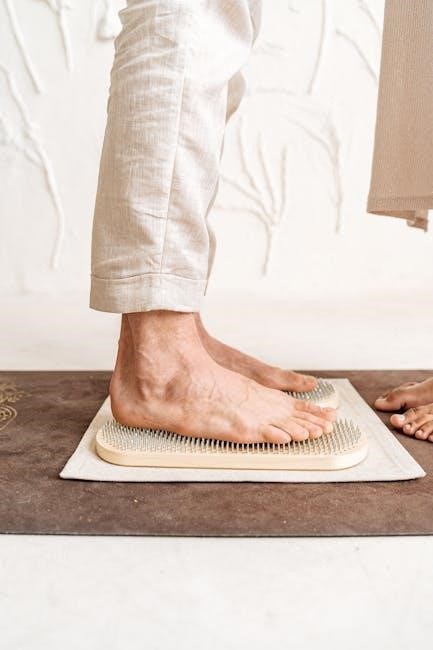
Scientific Perspective
Research validates acupressure’s effectiveness in pain relief and stress reduction. Studies show its impact on nervous system stimulation and hormone regulation, supporting its therapeutic benefits.
The Science Behind Acupressure
The science behind acupressure lies in its ability to stimulate the body’s natural healing processes. By applying pressure to specific points, it influences the nervous system, promoting the release of neurotransmitters like endorphins, which act as natural painkillers.
Research indicates that acupressure can lower stress hormones like cortisol and improve blood flow, enhancing overall physiological balance. Studies have also shown its effectiveness in managing chronic pain, improving sleep quality, and reducing symptoms of anxiety and depression.
The concept aligns with modern understanding of human anatomy and physiology, particularly in how pressure affects muscle tension and nerve function. A full body acupressure chart helps identify these key points, enabling individuals to apply techniques effectively for therapeutic benefits.
Effectiveness of Acupressure
Acupressure has been widely recognized for its effectiveness in addressing various health concerns. Numerous studies highlight its success in alleviating chronic pain, reducing stress, and improving sleep quality.
Its non-invasive nature makes it a popular choice for individuals seeking alternative or complementary therapies. The use of a full body acupressure chart ensures accurate application, enhancing its therapeutic benefits.
Research also supports its role in boosting the immune system and enhancing mental clarity. Many practitioners and patients attest to its positive outcomes, making it a valuable tool in holistic health care.

Resources and Guides
Access comprehensive guides and charts online, offering detailed acupressure point locations and techniques. These resources provide step-by-step instructions for effective self-treatment and professional practice.
Downloading the Full Body Acupressure Chart PDF
Downloading a full body acupressure chart PDF is a convenient way to access detailed maps of pressure points and techniques. These charts are widely available online, offering clear visuals of meridians and specific points for various health conditions.
Reputable sources provide free or paid downloadable PDFs, ensuring high-quality, printable formats. Customize the charts to suit personal or professional needs, enhancing your practice with precise point locations and instructions.
Use these resources to explore acupressure techniques, meridian pathways, and gateways. Downloading a PDF chart is an excellent starting point for self-treatment or professional training, making it easy to reference anytime, anywhere.
Using the Chart for Self-Treatment
A full body acupressure chart is an invaluable tool for self-treatment, offering detailed maps of pressure points and techniques. Identify specific points for pain relief, stress reduction, or improving sleep quality by referencing the chart.
Begin by locating key meridians and gateways, then apply gentle, firm pressure using fingers or tools. Massage each point in circular motions for 30 seconds to stimulate energy flow and relaxation.
Regular practice enhances overall well-being, boosting circulation and reducing muscle tension. Use the chart to explore various techniques, ensuring safe and effective self-treatment tailored to your needs.
Recommended Sources for Acupressure Information
For reliable acupressure information, consult academic journals, reputable health websites, and official TCM resources. Websites like PubMed and Google Scholar offer evidence-based studies on acupressure benefits and techniques.
Official institutions, such as the National Institutes of Health (NIH), provide downloadable resources, including full-body acupressure charts. These sources ensure accuracy and safety for self-treatment practices.
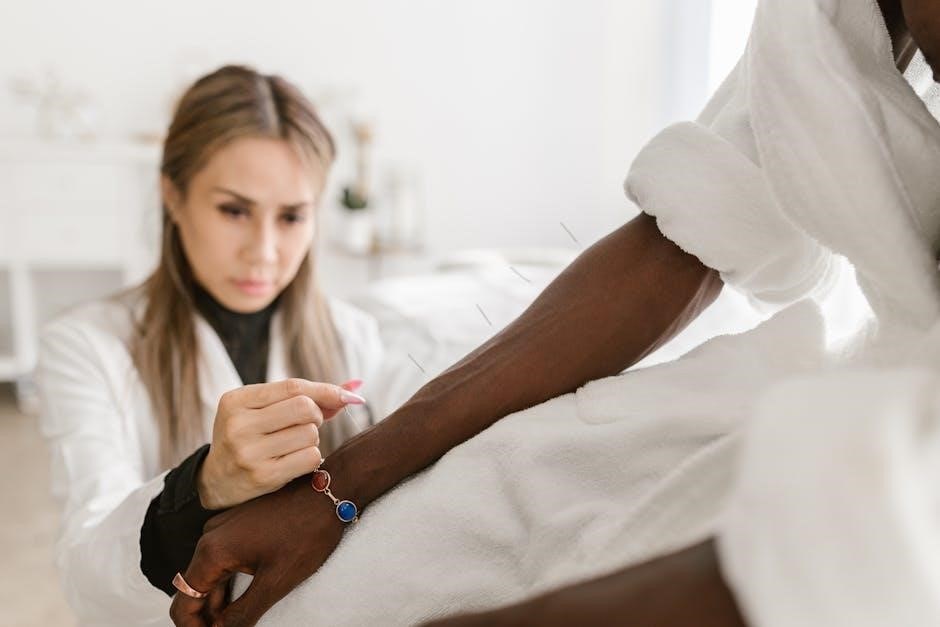
Additionally, books and e-books by licensed practitioners are excellent guides, offering detailed instructions and visual charts. Healthcare providers and wellness centers also share credible resources for acupressure education.
